A Quick History Of The Workers’ Holiday
American laborers held the first Labor Day Parade on September 5, 1882. During the first parade, approximately 10,000 people marched from New York’s City Hall to Union Square. The New York Times reported workers who joined the gathering included cigarmakers, dressmakers, printers, shoemakers, bricklayers, and other tradespeople.
Back in 1882, Labor Day was not an official holiday. Given that, many of the parade attendees risked their jobs by participating in the one-day strike. People held signs that said: “Less Work and More Pay”. Attendees then were fighting for an eight-hour workday and a prohibition on the use of convict labor.
According to Reader’s Digest, at the height of the Industrial Revolution, an average American worked 12-hour days, seven days a week. In addition, children also performed hard labor in harsh working conditions for minuscule pay. Laborers started to notice the poor working conditions. Subsequently, labor unions slowly started to form and fight for American workers’ rights to fair pay, fair hours, and safe working conditions.
Numerous states recognized the holiday in the 1880s, but it wasn’t made a national holiday until President Grover Cleveland signed it into law in June 1894.
How Did The Working Conditions Improve?
Labor movements following the officialization of the Labor Day holiday have contributed to the progress in shaping workplace policies and improving workers’ living standards. Despite many challenges, unions have successfully campaigned for the improvement of the:
Working hours
Before, workers toiled 12 hours a day, and 7 days a week. Now, employees enjoy a standard 8-hour work day. Workers now also enjoy their weekends, and sometimes even paid and unpaid leave.
Workspace
Companies and employers are now responsible for providing a safe workplace, in-office supplies, and necessary training. These benefits were not available back in the day. People with jobs at nuclear power plants were exposed to huge doses of radioactive materials because employers refused to provide safety equipment and other tools.
Equality
Several members of work unions are Chinese, Mexican Americans, Irish, African Americans, and Croats, and Jews. This is because the most dangerous, dirtiest, and lowest-paid work was commonly assigned to them. Labor movements fought hard to end inequality. At present, recruiters understand that the race of an applicant does not define their skills and talents.
It has been a very long journey from an exploited workforce to an employee-driven culture. The improved working conditions should be recognized and applauded. Now, several companies and employers take the time to research the best and most convenient work arrangements for their workers.
The diversity, flexibility, and resiliency of human nature paved the way for the normalization of manageable work hours, equality in the hiring process, and the development of new work arrangements. Presently, working remotely is on the rise. This setting allows employees to work from home and other locations, and accomplish their tasks virtually using various collaboration tools.
What Is A Remote Job?
A remote job is a work done outside of a traditional office environment. To work remotely means to accomplish tasks outside of a physical office setting. Commonly, remote workers and remote teams do their jobs at their homes, in coffee shops, or coworking spaces.
When the pandemic hit, different countries and companies started paying attention to the unconventional arrangement. Now, having a home office and working remotely is known as the “new normal”.
The Rise of Remote Workforce
According to Forbes, several businesses are geared toward remote work because of the mutual benefits between the employer and employee. Presently, 12.7% of full-time employees have remote positions and work outside of the company’s office. This only shows how rapid is the normalization of remote work environments. At the same time, a significant 28.2% of employees have adapted to a temporarily remote and partially remote work model.
Experts believe that by 2025, an estimated 32.6 million Americans will be remote employees. This number equates to about 22% of the distributed workforce. Across the globe, the arrangement of doing a job outside of the office is trending too. In 2019, only 7% of the population around the world was working from home. In 2022, a couple of years after the pandemic hit, 16% of companies in the world adopted a 100% remote first setup. This remote work arrangement means companies allow all their employees to accomplish their jobs outside of the office.
The future of remote work is very promising as more companies explore the benefits of remote work arrangements.
Remote jobs are available in almost all sectors and industries. However, a report published online by Forbes mentioned some industries are more open to remote working setups. For example, the information technology sector leads as the top industry for remote work in 2023. The digital nature of work in information technology correlates with their top position in the industry with the most remote workers.
Jobs related to marketing, accounting and finance, and project management are also on the rise.
What Are The Different Types Of Remote Work?
Now that you have a better understanding of remote work, you may be wondering what types of jobs can be done outside of the office.
In 2022, accountants topped the list of most sought-after remote job roles. Other recognizable and considered as best remote jobs include virtual executive assistant, customer service representative, and senior financial analyst. Several other opportunities for working remotely have opened up in industries like medical and health, marketing, human resources, and recruiting.
Remote Raven can offer tips on how to personalize remote services to any business needs. Depending on the concerns, the company can connect you with professional and skilled individuals with a background in performing tasks for the following remote positions:
- Virtual CPA
- Receptionist
- Executive Assistant
- Administrative support roles
- Construction project manager
- Web developer
- Graphic designer
- Copy and Content writer
- Bookkeeper
- Social media marketer or strategist
- Data encoder
- Medical transcriptionist
- Talent Acquisition Specialist
Where Do Remote Employees Do Their Jobs?

Many remote workers choose to do their jobs at home. However, since the restrictions from the COVID-19 pandemic have eased, some remote employees have explored other locations like a coffee shop, and public library. Additionally, some other remote employees choose to a job at a coworking space.
Remote workers are also sometimes called digital nomads. The term was dubbed from the nature of remote roles–digital. Additionally, nomads mean people with no permanent abode. Digital nomads are known to accomplish a job from places by the beach, mountain houses, or any location as long as there is a strong internet connection.
Having a remote job entails more freedom. A remote worker has the freedom to choose where to work, when to accomplish tasks, and how to spend personal time.
Different Levels Of Remote Jobs
According to a blog posted by Flexjobs, there are three distinct levels of remote positions:
Pure Remote Work
What does a fully remote job mean?
This setup means an employee works a hundred percent outside of the office. Commonly, these positions are offered by fully remote companies.
An example of a fully remote company is Zapier. Information from their website states that Zapier creates workflows that connect the client’s apps to automate repetitive tasks so that clients can save time and scale their projects. The company has remote employees in over 28 countries and 17 time zones. Zapier is hiring and offers remote jobs to workers skilled in marketing, sales operations, and IT.
Hybrid Remote Work
What does partial remote job mean?
At this level, a remote employee only partially works at the central office. This arrangement allows employees to accomplish work virtually when applicable and sometimes go to the company office for important face-to-face meetings and other responsibilities.
Microsoft is an example of a company that practices a hybrid work model. In March 2021, the company released a blog post allowing employees to work remotely up to 50% of the time.
Optional Remote Work
What does optional remote job mean?
A remote job at this level means the employee is given the freedom to decide how they want to fulfill their role. Dan Price, the CEO of Gravity Payments, said in an interview with The Guardian: “Instead of making a top-down decision as a CEO, I asked our staff how they want to work. Just 7% wanted to go back to the office full-time, while 31% wanted an office-remote hybrid and the remaining 62% wanted to work from home all the time. So I told them: sounds great. Do whatever you want.”
Gravity Payments, a credit card processing company, promotes a very flexible work arrangement and allows their 200 employees to either work remotely all the time, purely work from home, or hybrid. Dan Price explained that the decision was made because the company is employee-driven and promotes work-life balance.
How Remote Work Benefits Employees (And Employers Too!)
Most remote employees personally chose the outside-of-office work arrangement. Compared to employees who are forced to take on responsibilities, employees who can make decisions for themselves result in a more positive mindset, leading to an increase in productivity at work.
Forbes reported that 35% of remote employees feel more productive when working fully remotely. The positive percentage of productivity is credited to reduced time traveling to the office, fewer in-person distractions, or the ability to design a work environment that suits their personal needs. Productive members, either remote workers or in-office employees, help the business grow.
A remote job gives a person the freedom to create their schedule. Many industries are now becoming output-oriented. Business owners try to focus more on the quality of work rather than the number of hours spent working. This work culture is very favorable for people who manage both their homes and still want to earn. It shows that a remote employee who is good at time management can harmonize both their professional and personal lives.
The emerging setup of remote working also has benefits for business owners. An employer who wants to hire a remote worker is not required to provide a traditional office space. In relation, when business owners employ a fully remote team, they eventually save on rent fees, operational costs like electricity and water, janitorial services, and even office supplies.
Is It Good To Have A Remote Job?
If you have the skills to thrive in a remote work environment, Remote Raven is actively looking for dedicated individuals to join their talent pool. A remote job will let you earn without leaving the comforts of your home.





